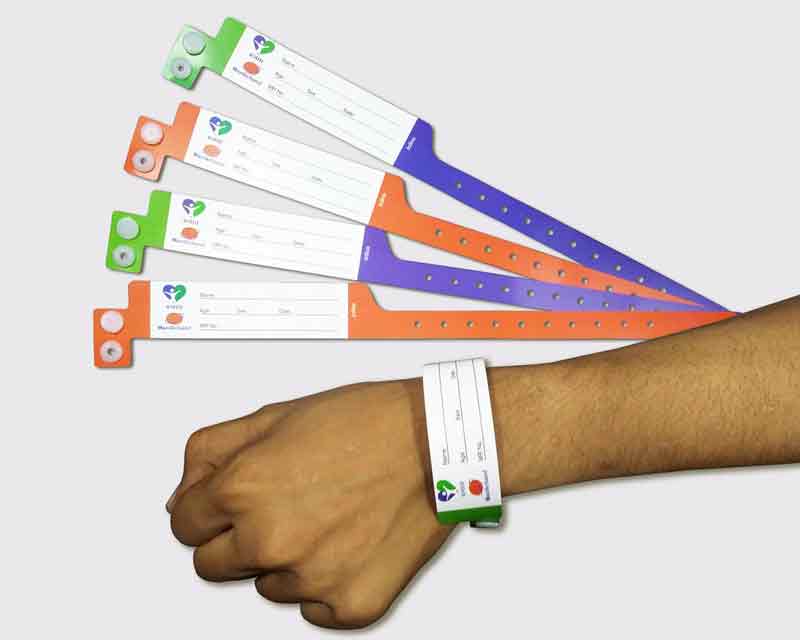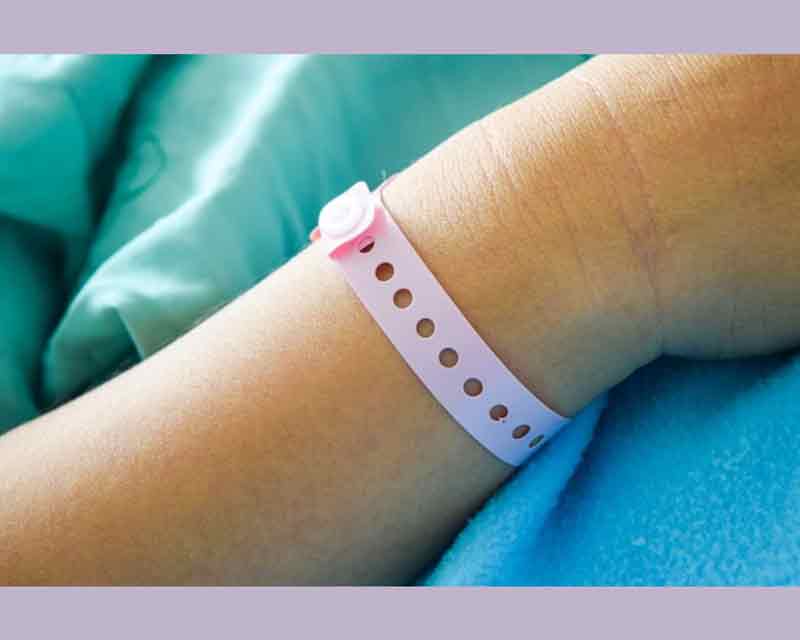Exploring the Various Kinds Of Patient Identification Band Utilized in Medical Facilities
In the complex world of health care, the crucial function of Patient Identification bands commonly goes unnoticed. These bands, differing from basic paper wristbands to innovative RFID bands, form the foundation of Patient safety procedures, ensuring accuracy in Patient Identification.
Understanding the Significance of Patient Identification Bands
While they may appear like plain devices, Patient Identification bands play a crucial duty in medical facilities. These bands offer as a critical tool for confirming Patient identification, protecting against medical errors associated with misidentification. The bands commonly display vital details such as the Patient's name, age, blood group, and any recognized allergies. They enable medical care specialists to promptly access this vital details, thus facilitating precise and timely clinical treatment. Patient Identification bands likewise aid in enhancing management jobs, ensuring accurate record-keeping and billing. Despite their simpleness, these bands personify the concept of Patient security, a cornerstone of high quality health care. Without them, the threat of clinical mistakes, and consequently, Patient injury, could significantly enhance.
Traditional Paper Wristbands: Their Use and Limitations
Conventional paper wristbands have been a staple in Patient Identification throughout different medical centers. While their usage is widespread, they nurture specific limitations that may impact their performance in Patient management. This area will concentrate on the range of their application and the intrinsic drawbacks connected with their usage.
Paper Wristbands: Usage Range
In the world of Patient Identification, paper wristbands have actually long held a vital duty. These bands are typically utilized in outpatient settings, where the Patient's remain is short-term. In spite of innovations in modern technology, the humble paper wristband remains a cost-efficient and reliable option for Patient Identification in different health care situations.
Limitations of Paper Wristbands
Despite their extensive usage, paper wristbands are not without their downsides. In addition, paper wristbands usually lack the technical capacities of more modern-day options, such as barcoding or RFID chips, restricting their performance to just displaying created information. Paper wristbands can trigger pain or skin irritation to some patients, specifically when worn for extensive periods.
Barcoded Wristbands: Innovations in Patient Identification
While Patient Identification has long been a crucial element of health care, the arrival of barcoded wristbands signifies a significant leap forward. These bands leverage the simplicity of barcoding technology, allowing for Patient information to be quickly checked and accessed. They boost the rate and precision of Patient Identification, minimizing the risk of clinical errors associated to misidentification.
Superhigh Frequency Identification (RFID) Bands: an Action In The Direction Of Futuristic Health Care
The development of Patient Identification bands has caused the emergence of Radio Frequency Identification (RFID) Bands (patient identification band). These ingenious gadgets present essential advantages for healthcare centers, using a much more efficient and highly progressed means of Patient Identification. The application of RFID in health care is a significant action in the direction of a more advanced technique to Patient monitoring and safety and security
Comprehending RFID Bands

RFID Bands: Secret Advantages
Welcoming a future where technology and healthcare combine, radio frequency Identification bands supply a number of key advantages. Mainly, these bands enhance Patient security by giving precise, instant Identification, consequently decreasing medical mistakes. RFID bands can keep a vast amount of Patient information, consisting of clinical history and allergies, enabling personalized treatment. They additionally streamline administrative jobs, as the automated information entry replaces hands-on procedures, boosting efficiency and lowering documentation. Moreover, RFID bands supply real-time tracking of people, vital in high-risk atmospheres such as surgical procedure or intensive care. These bands are long lasting and resistant to environmental aspects, ensuring regular performance. Generally, RFID bands stand for a significant innovation in Patient Identification modern technology, benefiting both clients and healthcare providers.
Executing RFID in Health Care
As we tip into a technologically innovative age, the execution of RFID bands in healthcare ends up being progressively essential. These bands offer a smooth way to track and identify clients, guaranteeing their safety and security and improving performance in treatment procedures. RFID bands use countless benefits over standard Identification approaches. They can keep a vast amount of data, including the Patient's medical history and treatment plans, which can be easily accessed by doctor. This data assists physicians make educated choices concerning the Patient's treatment plan. Moreover, RFID bands decrease medical mistakes by offering exact Patient Identification, which is vital in stopping misdiagnosis or wrong medicine administration. Hence, the implementation of RFID bands is a substantial action towards enhancing Patient security and healthcare distribution.

Color-Coded Wristbands: Helping in Quick and Accurate Medical Diagnosis
In the dynamic atmosphere of a clinical center, color-coded wristbands have actually arised as important devices for swift and specific Identification of an individual's medical problem. These wristbands, worn by individuals, lug specific colors that match to various clinical conditions or conditions. This system is created to offer instant aesthetic cues to health care companies, boosting Patient safety and care quality.
Methods for Reliable Execution and Management of Patient ID Bands
Accomplishing optimal use of Patient Identification bands necessitates a well-structured method you could try this out for their execution and monitoring. The initial action involves training all health personnel on the importance of correctly applying and checking out these bands. Secondly, health centers need to systematize the usage of ID bands throughout all divisions, making certain uniformity and decreasing inconsistencies. Routine audits must be performed to verify adherence to policies and to rectify any incongruities. Patient education is also essential; patients have to recognize the objective of the bands and the requirement for their continuous wear. patient identification band. It's essential to have a back-up strategy in location, such as barcode scanning or biometrics, to guarantee that Patient Identification is never endangered.
Final thought
Patient Identification bands are essential in medical centers to make certain safety and security and accuracy. Efficient application and monitoring of these bands can substantially lower medical errors, increase effectiveness, and enhance general Patient care.
These bands, varying from basic paper wristbands to innovative RFID bands, Read Full Report create the foundation of Patient safety and security methods, guaranteeing precision in Patient Identification.The evolution of Patient Identification bands has brought about the development of Radio Frequency Identification (RFID) Bands. Overall, RFID bands represent a significant development in Patient Identification technology, benefiting both individuals and health care carriers.
RFID bands lower clinical mistakes by supplying precise Patient Identification, which is essential in Going Here avoiding misdiagnosis or wrong medication administration. Patient education and learning is additionally critical; people have to comprehend the function of the bands and the requirement for their constant wear.